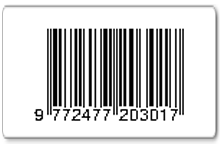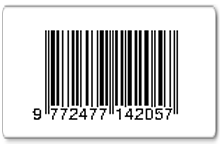Fostering Teachers’ Competence of the Integrated STEM Education
Abstract
For the successful implementation of integrated STEM education, teachers’ competence could be a key element. The purpose of this research is to identify necessary behaviors of competence for teachers’ teaching integrated STEM subjects more efficiently and their desire for professional development courses. The qualitative analysis was utilized to examine teachers’ competence and perceptions of effective STEM teacher professional developments (TPD). Semi-structure interview method with 15 teachers and survey method with 187 teachers were utilized to address our research questions in Vietnam. We found that teachers’ competence in integrated STEM education consists of four components namely, awareness, designing, implementing, assessing and adjusting the STEM teaching plan. Based on the research results, we propose an essential structural model of teachers’ competence to develop professional competence about integrated STEM education and some orientation for building the structure of the professional development program. Implications for effective STEM TPD were documented
Keywords
Full Text:
PDFReferences
Aldahmash, A. H. et al 2019, ‘Saudi Arabian science and mathematics teachers’ attitudes toward integrating STEM in teaching before and after participating in a professional development program’, Cogent Education, vol. 6, no. 1.
An, D. T. T 2017, 'Develop integrated teaching capacity for chemistry pedagogical student through the subject of high school chemistry teaching method', PhD thesis, Hanoi National University of Education, Hanoi.
Appleton, K., Ginns, I. S. and Watters, J. J 2000, ‘The Development of Preservice Elementary Science Teacher Education in Australia’, Science Teacher Education: An international perspective, pp. 9–29.
Asunda, P. A 2017, ‘Integrated STEM: a new primer for teaching technology education.’, Technology & Engineering Teacher, vol. 76, no. 5, pp. 14-9.
Banilower, E. R., Heck, D. J. and Weiss, I. R 2007, ‘Can professional development make the vision of the standards a reality? The impact of the National Science Foundation’s local systemic change through teacher enhancement initiative’, Journal of Research in Science Teaching, vol. 44, no. 3, pp. 375-95.
Barakos, L., Lujan, V. and Strang, C 2012, ‘Science, technology, engineering, and mathematics (STEM): Catalyzing change amid the confusion’, Portsmouth, NH: MRC Research Corporation, Center on Instruction.
Bartels, S. L., Rupe, K. M. and Lederman, J. S 2019, ‘Shaping Preservice Teachers’ Understandings of STEM: A Collaborative Math and Science Methods Approach’, Journal of Science Teacher Education, vol. 30, no. 6, pp. 666-80.
Bien, N V 2016, ‘Competencies and physics teaching for development student’s competencies’, Journal Science of HNUE, vol. 61, no. 8B, pp. 11-22.
Bien, NV et al 2019, STEM education in secondary schools, Vietnam Education Publishing House Limited Company, Hanoi.
Brown, R et al 2011, ‘Understanding STEM: Current perceptions’, Technology and Engineering Teacher, vol. 70, no. 6, pp. 5-9.
Burghardt, M. D. and Hacker, M 2004, ‘Informed Design: a Contemporary Approach To Design Pedagogy As the Core Process in Technology.’, Technology Teacher, vol. 64, no. 1, pp. 6.
Burns, M. 2002, ‘From Black and White to Color: Technology, Professional Development and Changing Practice’, T H E Journal (Technological Horizons In Education), vol. 29, no. 11, pp. 36.
Capps, D. K., Crawford, B. A. and Constas, M. A 2012, ‘A Review of Empirical Literature on Inquiry Professional Development: Alignment with Best Practices and a Critique of the Findings’, Journal of Science Teacher Education, vol. 23, no. 3, pp. 291-318.
Chai, CS 2019, ‘Teacher Professional Development for Science, Technology, Engineering and Mathematics (STEM) Education: A Review from the Perspectives of Technological Pedagogical Content (TPACK)’, Asia-Pacific Education Researcher, vol. 28, no.1, pp. 5-13.
Chiyaka, E. T. et al 2017, ‘Comparative Analysis of Participation of Teachers of STEM and Non-STEM Subjects in Professional Development’, Journal of Education and Training Studies, vol. 5, no. 9, pp. 18-26.
Cobern, W. W. and Loving, C. C 2002, ‘Investigation of preservice elementary teachers’ thinking about science’, Journal of Research in Science Teaching, vol. 39, no. 10, pp. 1016-31.
Cohen, L., Manion, L. and Morrison, K 2017, Research Methods in Education, The Australian Educational Researcher.
Culp, K. M., Honey, M. and Mandinach, E 2005, ‘A retrospective on twenty years of education technology policy’, Journal of Educational Computing Research, vol. 32, no. 3, pp. 279-307.
Elster, D 2014, ‘First- Year Students ’ Priorities and Choices in STEM Studies – IRIS Findings from Germany and Austria’, Science Education International, vol. 25, no. 1, pp. 52-9.
Fore, G. A et al. 2015, ‘Learning at the nano-level: Accounting for complexity in the internalization of secondary STEM teacher professional development’, Teaching and Teacher Education, vol. 51, pp. 101–12.
Goldhaber, D. D. and Brewer, D. J 1997, ‘Why don’t schools and teachers seem to matter?: Assessing the impact of unobservables on educational productivity’, Journal of Human Resources, vol. 32, no. 3, pp. 505-23.
Han, S. et al. (2015) ‘In-service teachers’ implementation and understanding of STEM project based learning’, Eurasia Journal of Mathematics, Science and Technology Education, vol. 11, no. 1, pp. 63–76.
Hung, V. X 2016, 'About the teaching capacity system of teachers in vocational education institutions according to the implementation capacity approach’, Journal of Vocational Science, pp. 30.
Krause, E. et al 2020, ‘Relevant Content for a Scientific Collaboration in Mathematics and Physics Education Research - A Comparative Content Analysis of Handbooks and Conference Proceedings in Germany and Vietnam’, Eurasia Journal of Mathematics, Science and Technology Education. Modestum LTD, vol. 16, no. 4, p. em1836.
Lasley, T. J., Siedentop, D. and Yinger, R 2006, ‘A systemic approach to enhancing teacher quality the Ohio model’, Journal of Teacher Education, vol. 57, no. 1, pp. 13-21.
Lynch, K. et al 2019, ‘Strengthening the Research Base That Informs STEM Instructional Improvement Efforts: A Meta-Analysis’, Educational Evaluation and Policy Analysis, vol. 41, no. 3, pp. 260-93.
Margot, K. C. and Kettler, T 2019, ‘Teachers’ perception of STEM integration and education: a systematic literature review’, International Journal of STEM Education, vol. 6, no. 1, pp. 16-21.
Radloff, J. and Guzey, S 2016, ‘Investigating Preservice STEM Teacher Conceptions of STEM Education’, Journal of Science Education and Technology, vol. 25, no. 5, pp. 759–74.
Rivkin, S. G., Hanushek, E. A. and Kain, J. F 2005, ‘Teachers, schools, and academic achievement’, Econometrica, vol. 73, no. 2, pp. 417-58.
Shernoff, D. J. et al 2017, ‘Assessing teacher education and professional development needs for the implementation of integrated approaches to STEM education’, International Journal of STEM Education, vol. 4, no.1.
Song, M 2017, 'Teaching integrated STEM in Korea: Structure of teacher competence', LUMAT-B: International Journal on Math, Science and Technology Education, vol. 2, no. 4, pp. 61-72.
Supovitz, J. A. and Turner, H. M. (2000) ‘The effects of professional development on science teaching practices and classroom culture’, Journal of Research in Science Teaching, vol. 37, no. 9, pp. 963-80.
To Khuyen, N. T. et al. (2020) ‘Measuring teachers’ perceptions to sustain STEM education development’, Sustainability (Switzerland), vol. 12, no. 4.
Tsai, H. Y., Chung, C. C. and Lou, S. J. (2018) ‘Construction and development of iSTEM learning model’, Eurasia Journal of Mathematics, Science and Technology Education, vol. 14, no. 1, pp. 15–32.
Vietnam Ministry of Education and Training 2018, The General Education Curriculum, viewed 20 November 2020, < https://data.moet.gov.vn/index.php/s/LETzPhj5sGGnDii#pdfviewer>.
Wang, H. et al 2011, ‘STEM Integration : Teacher Perceptions and Practice STEM Integration : Teacher Perceptions and Practice’, Journal of Pre-College Engineering Education Research (J-PEER),vol. 1, no. 2, pp. 1–13
Wood, E. et al 2005, ‘Teachers’ Perceptions: barriers and supports to using technology in the classroom’, Education, Communication & Information, vol. 5, no. 2, pp. 183-206.
Yildirim, B 2016, ‘An Analyses and Meta-Synthesis of Research on STEM Education’, Journal of Education and Practice, vol. 7, no. 34, pp. 23–33.
DOI: http://dx.doi.org/10.30870/jppi.v6i2.6441
Refbacks
- There are currently no refbacks.
Copyright (c) 2020 Jurnal Penelitian dan Pembelajaran IPA

This work is licensed under a Creative Commons Attribution 4.0 International License.
Jurnal Penelitian dan Pembelajaran IPA is licensed under a Creative Commons Attribution 4.0 International License
Copyright © 2025 Jurnal Penelitian dan Pembelajaran IPA. All rights reserved.






